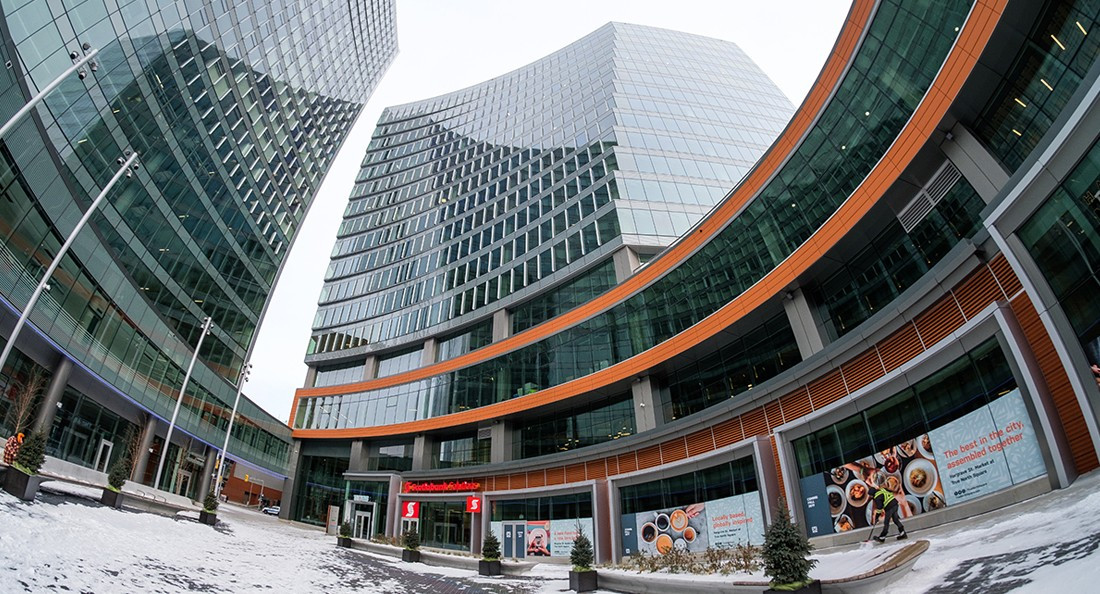A tale of two cities
Economic and social development in downtown Winnipeg
Downtown Winnipeg has been the subject of much media scrutiny in recent years. A now-infamous Maclean’s article published in 2015 called attention to the issue of racism toward Indigenous people in Winnipeg and its effects, which are largely felt in the downtown area.
A recent ESPN poll found that 42 per cent of National Hockey League (NHL) players dread playing in Winnipeg more than any other city. An article unveiling the results of the poll even published comments from respondents that described Winnipeg as “cold,” “dirty” and “depressing.”
Numerous advocates for development in downtown Winnipeg were disappointed when, in the 2018 municipal election referendum, 65 per cent of voters opposed “the opening of Portage and Main to pedestrian crossings,” an issue which gained momentum in districts near the city centre but was strongly opposed by suburban voters.
Many of the narratives put forth about downtown Winnipeg neglect the nuances of economic and social development. In the conversation surrounding urban centres, it is important to consider the perspectives of those who work and live downtown. In fact, 66,850 people live in Winnipeg’s Downtown Community Area, according to the 2016 census.
While economic development involves job creation and economic growth, it can also be a much more holistic concept that includes social well-being and improvements to quality of life. There have been positive developments in Winnipeg in recent years, such as a GDP growth rate higher than most Canadian cities, but many key issues need to be addressed.
When discussing economic development in the downtown area, it is important to acknowledge that social issues, crime, poverty and racism are complexly intertwined. Nevertheless, the downtown area remains the centre of economic activity in Winnipeg.
Dr. Jino Distasio, director of the Institute of Urban Studies and vice-president of research and innovation at the University of Winnipeg (U of W), says in an email to The Uniter that “downtown Winnipeg has been on a decade-long expansion of its physical infrastructure,” and that the level of development is “occuring at levels not seen in perhaps 100 years.
“We have seen (nearly a billion dollars) invested and several thousand condos built,” Distasio says.
However, he emphasizes that the situation is two-sided.
“We have continued to struggle with pressing issues of people experiencing extreme poverty, addiction and homelessness,” he says.
Condos on Waterfront Drive on the edge of Winnipeg's Exchange District.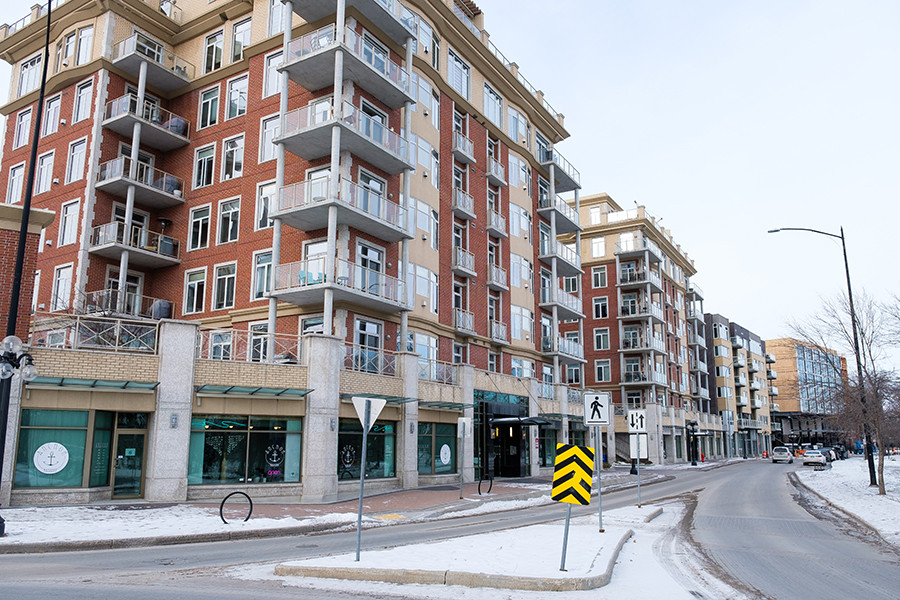
A 2018 report from the Canadian Centre for Policy Alternatives found that 30.3 per cent of people living in the Daniel McIntyre ward (encompassed by the Downtown Community Area) live below the poverty line.
The issues of addiction and crime are intertwined: the Winnipeg Police Service says that crime has been amplified by the increased pervasiveness of meth, the effects of which are largely felt downtown. A 2016 study done by Peg, an organization which measures Winnipeg’s well-being through various indicators, found that the substance-abuse rate in the Downtown Community Area was 7.6 per cent, well above the rate for the entire city of 4.9 per cent.
Dr. Simon Berge, a resident of downtown Winnipeg and business chair in co-operative enterprises at the U of W, mentions safety as his main concern since he moved downtown four years ago.
“The recent crime surge has made things scary at times,” he says. Police Chief Danny Smith said recently at a news conference that crime this year is “well above the five-year average.”
Distasio says that “while Winnipeg is a better place than it was two decades ago, we need to shift gears to focus more on people and their needs to help address complex social situations that have entrenched poverty.”
“Ultimately, we want to see investment in the downtown succeed and support those living in and visiting the area,” he says.
A view down Portage Avenue, one of Winnipeg's major traffic routes, looking towards Portage and Main, an iconic intersection considered by many as the city's centre point.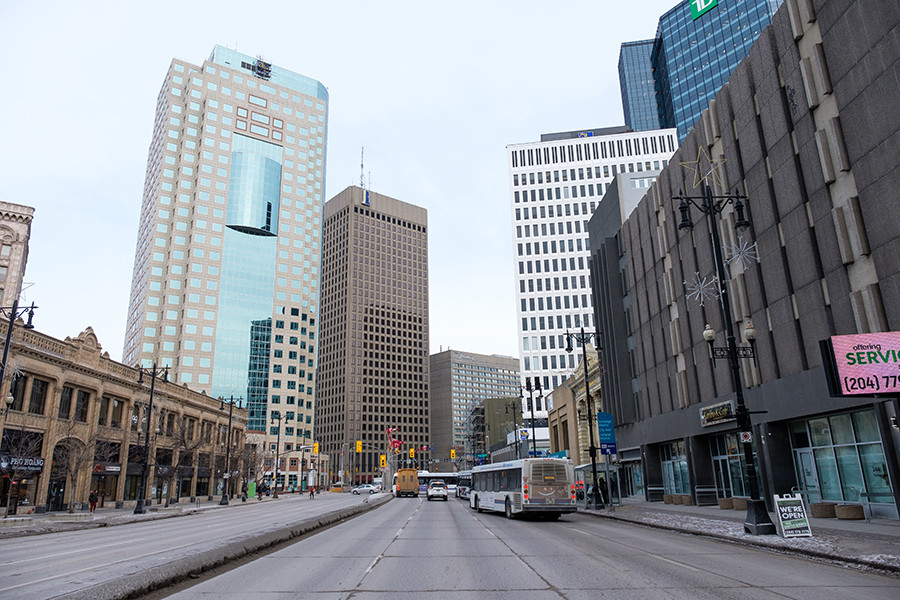
Housing
While house prices are skyrocketing across Canada, the average house price in Winnipeg is well below the national average and lower than in similarly sized Canadian cities.
Berge enjoys living near his work but feels that services such as restaurants, clothing stores and financial institutions are lacking.
He says that “the setup of the city caters towards a transient culture” and that “this encourages driving through rather than stopping and strolling, though there’s lots of potential here for increased walking and biking.”
The University of Winnipeg's Downtown Commons, pictured here to the left of the Buhler Centre, is meant to add more affordable living options to the area.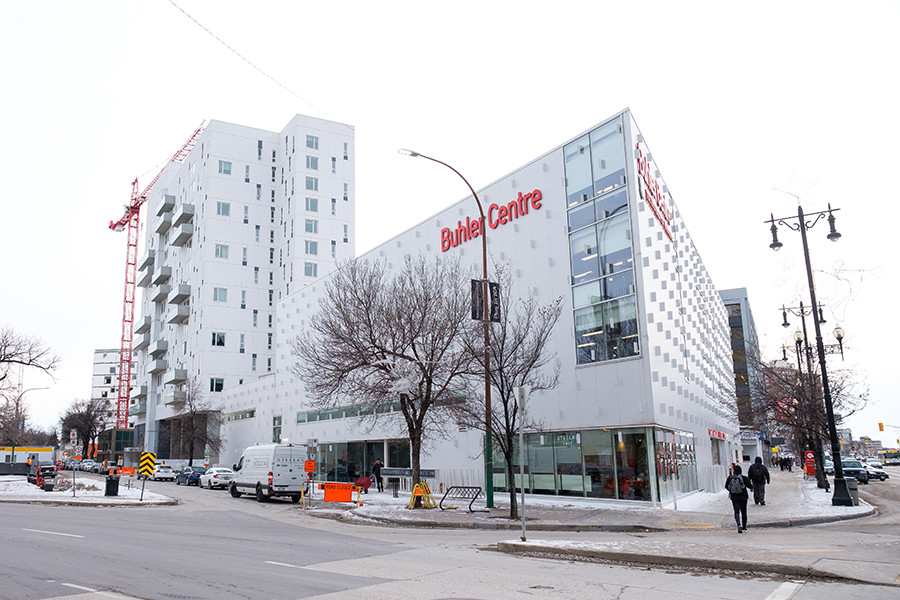
The downtown area has seen significant private-sector investment in recent years. The ongoing development boom has ranged from major multi-million-dollar projects like True North Square to more affordable housing like the U of W’s Downtown Commons.
“There is little doubt that a key transformation within the downtown has been in the residential sector,” Distasio says.
“This has been very good for the reimaging of the downtown, but a question that always lingers is ‘have we done enough to equalize the availability of affordable housing and other tenures?’” he says, adding that “this is perhaps part of what the next phase of development could look at.”
Despite the relatively low house prices, poverty and affordable housing remain pressing issues.
“Much of the challenges related to poverty and homelessness need us to focus our attention more on the root causes and also provide support to the many agencies that are working to house, support and address poverty,” Distasio says.
“For greater impact, programming dollars for social programs, including housing and perhaps addressing homelessness and poverty, don’t necessarily have to have spatial boundaries.”
Uzoma Asagwara, the newly elected MLA for Union Station who is a community activist and psychiatric nurse, considers housing to be one of the most important economic and social issues facing downtown Winnipeg.
“It is critically important that in the development of housing and in the opening-up of access to different kinds of housing that we ensure there is a sufficient amount of affordable and social housing available,” Asagwara says.
The number of households receiving assistance from Manitoba Housing has declined from 35,555 in 2014 to 35,000 in 2018. To afford the average rent for a one-bedroom apartment in Manitoba, individuals must earn a salary of at least $18.08 per hour, which is well above the minimum wage.
Distasio believes there would “be a much greater impact if we worked with our existing neighbourhood organizations to invest in areas currently experiencing high need as opposed to starting new projects in the downtown.”
“At present, we have so much need outside of the downtown (area), but equally there is a high level of local capacity,” he says.
“They just need more access to resources and funding.”
A cyclist rides their bike on the sidewalk alongside the Graham Avenue Bus Rapid Transit corridor, a route that is meant to be shared by both buses and cyclists.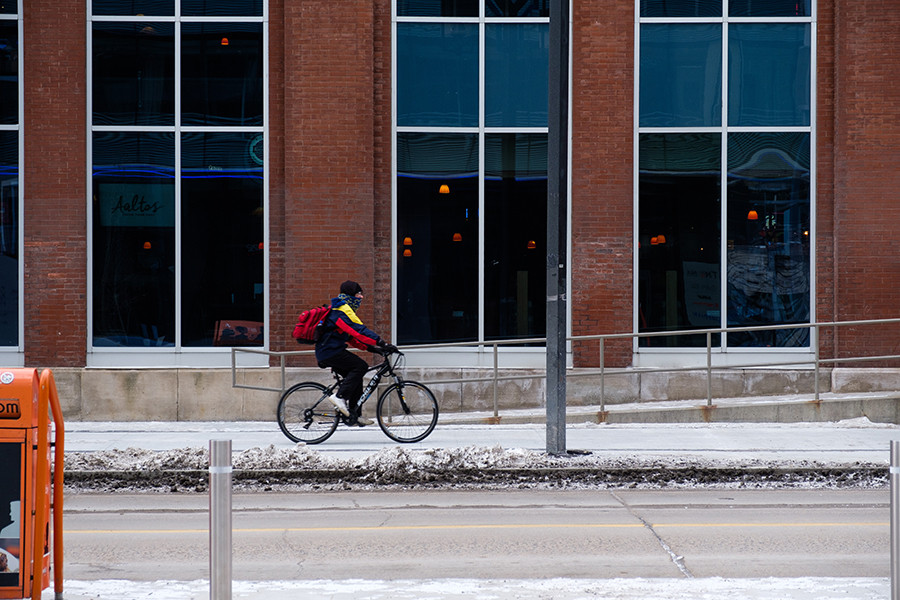
Looking ahead
“I think that we all have a responsibility to address food insecurity issues, inequalities, poverty and social issues affecting downtown Winnipeg,” Asagwara says, noting that private firms, community groups and all levels of government have a role to play.
“Relationship-building and collaborative approaches are important for all stakeholders,” they say.
The Woodbine Hotel and Parlour Coffee shop on Winnipeg's Main Street are two local downtown staples.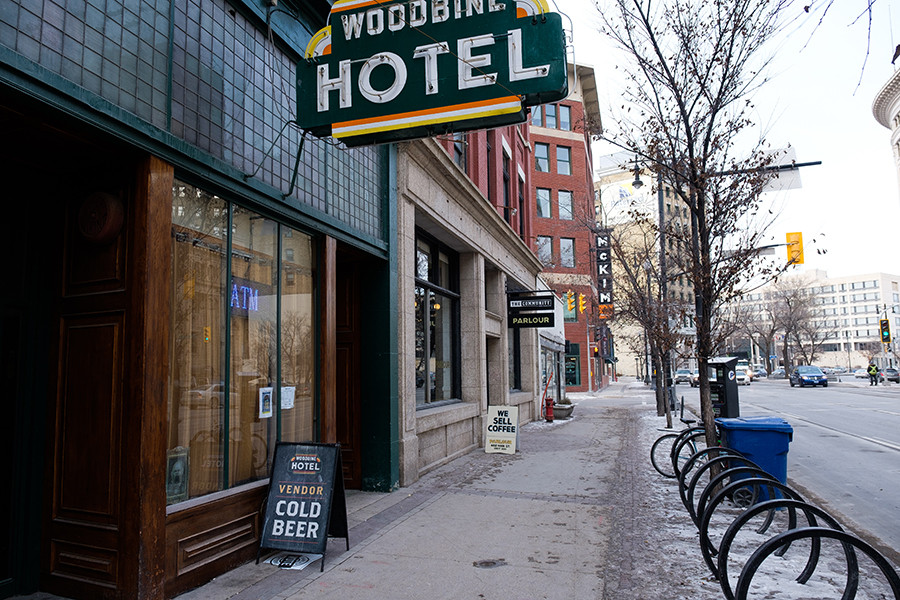
Distasio mentions that small businesses are important players in downtown’s economic progress.
“Right now, downtown is in the midst of a fairly major pivot from retail to entertainment,” he says.
“However, perhaps there are greater opportunities for smaller entrepreneurs to come into the downtown with new ideas and visions to make it more diverse for a range of people.”
Street art adorns a brick wall between two shops in Winnipeg's Exchange District.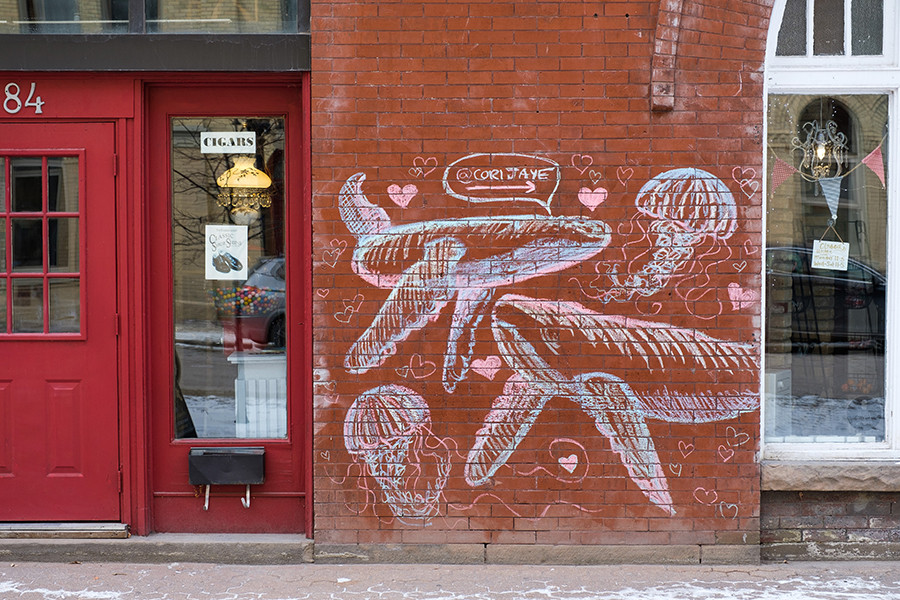
Berge agrees, saying “we need to find gathering spaces other than the traditional Tim Hortons.”
“We should aim to have people walk down our streets, take a look at the unique shops and find unique places to eat that are specifically ‘Winnipeg,’” he says.
“Neechi Commons had the right idea with an integrated meeting place and grocery store, but they just couldn’t manage their debt load,” Berge says.
Evidently, the ongoing process of reconciliation with Indigenous peoples plays an important role in the economic development of Canadian urban centres, especially in Winnipeg, which has the highest Indigenous population among Canadian cities.
Call to action 92 (ii) from the Truth and Reconciliation Commission of Canada asks the corporate sector to “ensure that Aboriginal peoples have equitable access to jobs, training and education opportunities in the corporate sector, and that Aboriginal communities gain long-term sustainable benefits from economic development projects.”
A westward view of the Graham Avenue Bus Rapid Transit corridor.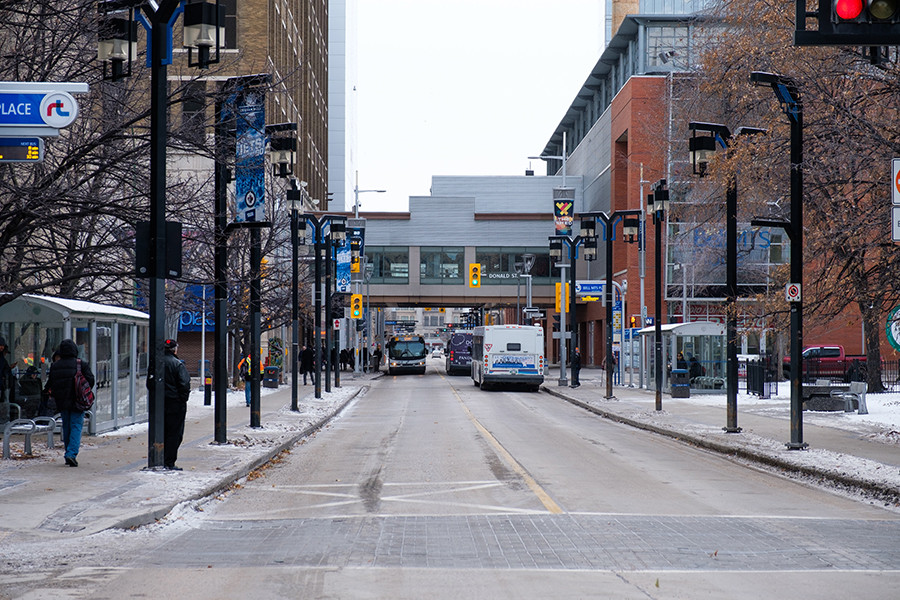
Even though much of the news surrounding downtown Winnipeg has been negative, and many pressing issues remain unaddressed, social and economic improvements have been made in numerous areas in recent years.
“While the downtown should continue to evolve,” Distasio says, “the good is that much of the recent (development projects) have been private sector-led with general government support.”
“This is an important shift,” he says.
Peg found downtown improvements in life expectancy, number of child care spaces, readiness to learn among kindergarteners, median household income and residential stability over the past few years.
“I love downtown Winnipeg, and I’ve been connected to downtown Winnipeg my entire life,” Asagwara says.
“The communities here are creative, vibrant, dynamic, resilient, beautiful, connected and invaluable to the fabric of Manitoba.”
A major consideration for people living downtown, or those pondering making the move, is a lack of grocery stores, which leads residents to rely on smaller convenience stores, such as this one on the corner of Graham Avenue and Vaughn Street.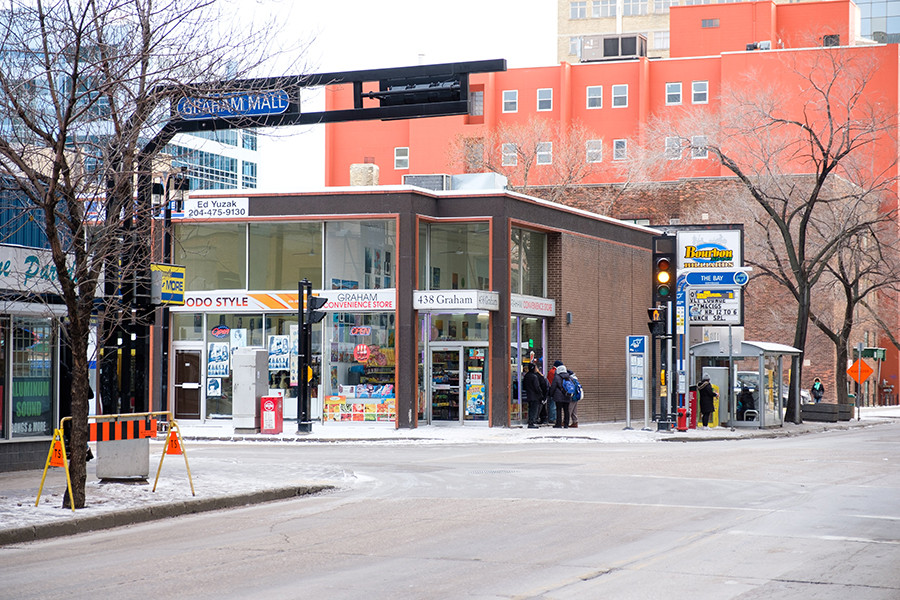
Published in Volume 74, Number 10 of The Uniter (November 14, 2019)

